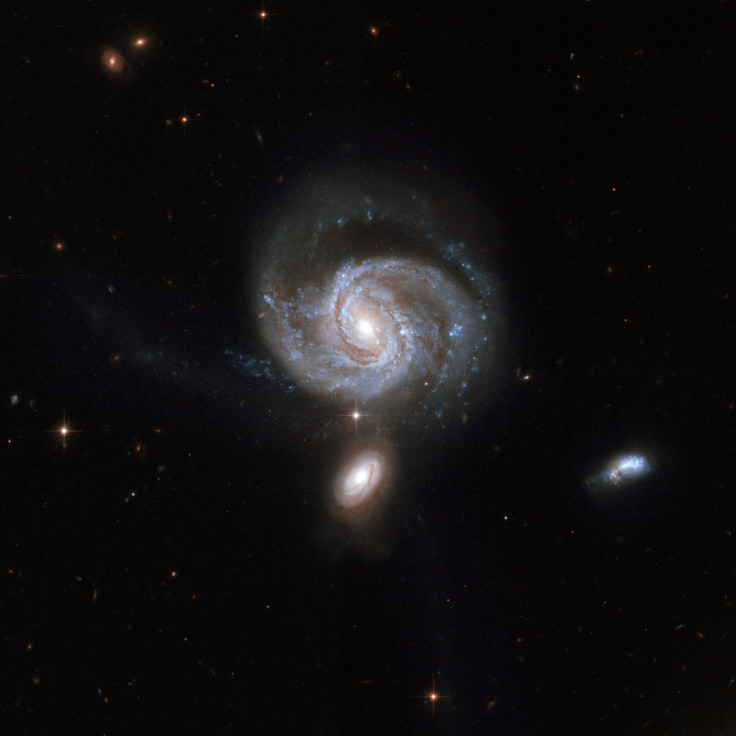Second Supermassive Black Hole Binary System Discovered, Formed Due To Galaxy Merger

Black holes are dark and mysterious, but pretty commonplace. Even their larger counterparts, supermassive black holes, exist at the centers of pretty much every galaxy, large and small. But what is more uncommon are pairs of black holes that orbit each other, and rarer still are supermassive black hole binaries.
Black hole binaries have been known to exist for a long time, and it was the merger of two orbiting black holes that produced the gravitational waves detected by the Laser Interferometer Gravitational-wave Observatory (LIGO) in 2015. Orbiting supermassive black holes, despite being theorized for long, had been detected only once by scientists so far, with the second instance reported in a paper published Monday.
Located about 400 million light-years from Earth in the spiral galaxy NGC 7674 (also called Markarian 533), the two supermassive black holes have a combined mass about 40 million times that of the sun with an orbital period of about 100,000 years. They are separated by approximately 0.35 parsecs, or roughly one light-year, which is the smallest gap between the two black holes of a binary system ever detected through direct imaging.
The discovery was led by Preeti Kharb from the National Centre for Radio Astrophysics (NCRA) at Tata Institute of Fundamental Research in India, and the paper in which the researchers describe the newly found system was co-authored by Dharam Vir Lal, also from NCRA, and David Merritt, professor of physics at Rochester Institute of Technology in New York.
In a statement Monday, Merritt explained how the discovery was made using very long baseline interferometry — a method that relies on a large network of radio telescopes scattered over a large area but working together as one massive radio telescope.
“Using very long baseline interferometry techniques, two compact sources of radio emission were detected at the center of NGC 7674; the two radio sources have properties that are known to be associated with massive black holes that are accreting gas, implying the presence of two black holes,” Merritt said in the statement.
Unlike regular black holes, if two supermassive black holes were to collide and merge, the resulting gravitational waves would not be detected by LIGO. In the first such detection in 2015, the black holes that collided were about 29 and 36 times the sun’s mass — a fraction of the combined mass of the two supermassive black holes just detected.
“A supermassive binary generates gravitational waves with much lower frequency than the characteristic frequency of stellar-mass binaries and its signal is undetectable by LIGO,” Merritt explained.
The only other pair of orbiting supermassive black holes that have been detected so far are even more massive, with a combined mass of about 15 billion times that of the sun, and are located 750 million light-years away.
These discoveries are important not just because they could tell us a lot more than our current understanding of both supermassive black holes and the galaxies they inhabit, but also because they could help us understand the future of our own galaxy. The Milky Way and our neighbor, the Andromeda galaxy, both have supermassive black holes at their centers and are on a collision course with each other. In a few billion years, the two galaxies could merge.
The paper, titled “A candidate sub-parsec binary black hole in the Seyfert galaxy NGC 7674,” appeared in the journal Nature Astronomy.
© Copyright IBTimes 2024. All rights reserved.



















